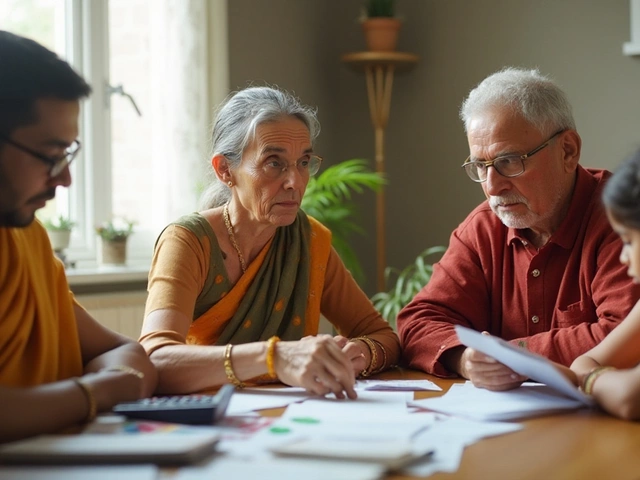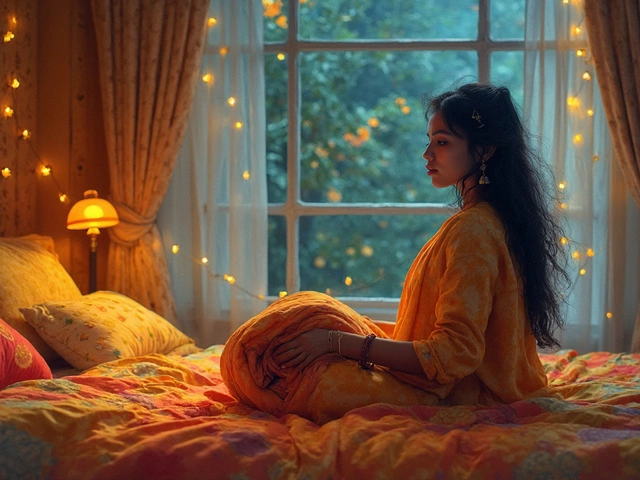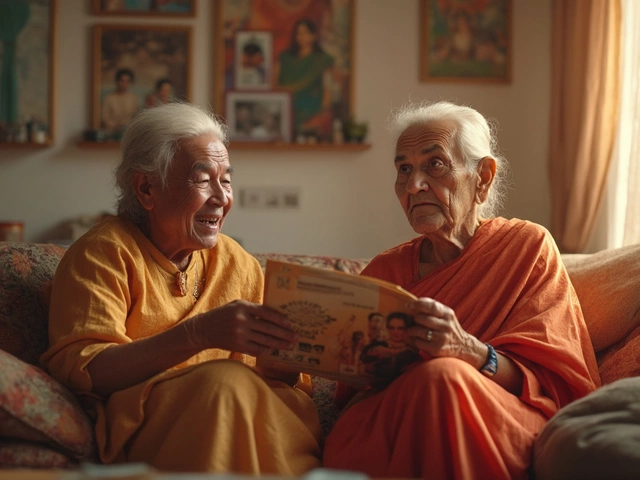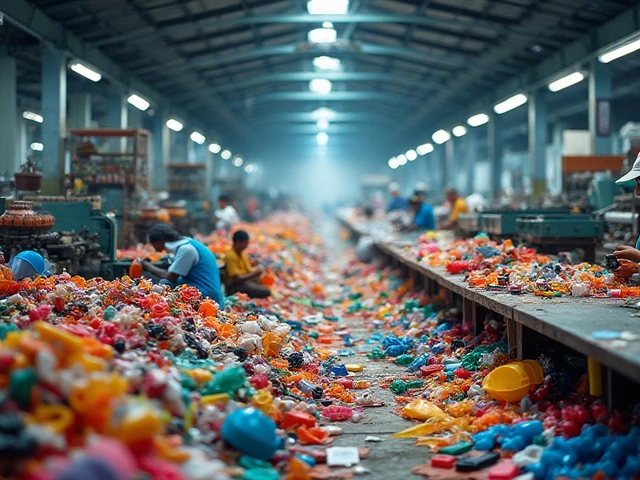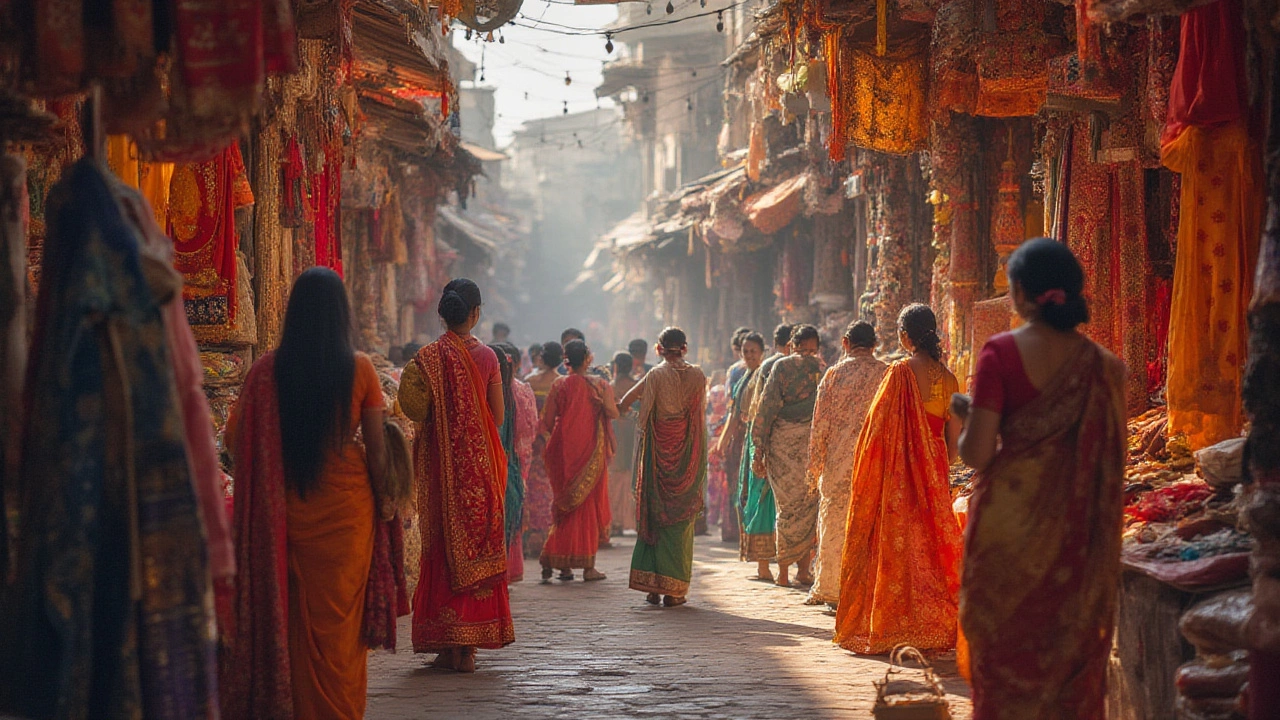
Ask anyone who’s ever spent time shopping in India about Surat, and you’ll probably get some wild descriptions: a place where fabrics shimmer in a million colors, sweets melt in your mouth, and the markets buzz all day—and honestly, even far into the night. But Surat isn’t just a hub for traders or fashion moguls. It’s a city where the art of buying isn’t about picking out souvenirs. It’s about discovering the best the city has to offer—from couture-worthy saris to market-fresh snacks—and knowing exactly what makes each item pure Surat.
The Textile Wonderland: Surat’s Legendary Fabrics and Fashion
Surat isn’t called the ‘Silk City of India’ for nothing. This place literally sets trends for half the country when it comes to fashion. The textile industry here is gigantic—fact: Surat churns out about 40% of all manmade fabric in India, and around 90% of the country's synthetic fabric comes from here. You don’t just get fabric; you get history, variety, and craftsmanship, whether you’re hunting for something for a wedding or eyeing ready-to-wear pieces for daily use.
Saris from Surat have a cult following. Think rich zari, pure silk, georgette, chiffon, and even the stylish crepe. Surat’s synthetic saris, especially, are famous for their colors and durability. The sequin work, embroidery, and digital prints look as good at a family party as they do under the lights at big events. Surat’s bridal saris, especially the Patola and Gaji silk versions, fly off shelves both in India and abroad. Many top designers source from Surat, and you’d be surprised how many Bollywood costumes are stitched from fabric bought in a Surat market.
It's not just about saris, though. Surat is the source of unstitched suit pieces, lehengas, kurtis, and dress materials. The options run from budget-friendly to pure luxury—trust me, you don’t need deep pockets to shop here, just a good eye. Consider checking out stores at Ring Road or the Millennium Market for the real deal, where local sellers actually know their threads and can help you understand the difference between jacquard and velvet at a glance.
Surat is also famous for Surat Diamond Jewelry, but don’t confuse this with cut diamonds—those are internationally renowned and come from the city's cutting factories, not street-side shops. If you love sparkle, plenty of stores sell artificial jewelry and cut stones inspired by hot-selling international designs. According to reliable 2024 government stats, Surat has over 40,000 textile production units, employing more than 500,000 people. This city lives and breathes fabric.
If you want to geek out a little, here’s something interesting:
| Textile Type | Main Market | Average Price Range (INR) |
|---|---|---|
| Georgette Saris | Ring Road | 500 - 3000 |
| Patola Silk | Old City | 5000+ |
| Sequined Dress Material | Millennium Market | 200 - 1500 |
| Readymade Kurtis | New Textile Market | 400 - 1200 |
Quick tip: Bargain! But be polite—most sellers actually give better deals to people who chat and show real interest. Cash is king, but digital payments are common too. And if you get confused between the hundreds of shops, just ask the shopkeepers—they often point you to competitors if they don’t have what you want.
Famous Surat Food Finds: Snacks, Sweets, and Spices
When you think about shopping, your mind probably jumps to clothes and trinkets. But if you walk through Surat’s main bazaars and skip the food, you’re making a mistake. This city’s snacks and sweets are the kind of thing people smuggle home in suitcases—and with good reason.
Surati Locho tops the list. Don't let the name fool you—‘locho’ literally means ‘mess’, but this snack is anything but a disaster. It's made from steamed gram flour with spices, and it's the city’s answer to both breakfast and a savory snack. Ask for it at local mithai (sweet) shops or street stalls near Chowk Bazaar. Another staple is Surati Ghari, a kind of rich, round stuffed sweet invented in the 19th century to energize soldiers. Made of clarified butter, dry fruits, and sugar, Ghari is dense. Eat one, and you’ll be set for hours. Just don’t try more than two, unless you want to skip dinner.
Dabeli (spicy potato burgers with pomegranate, peanuts, and tamarind chutney) is also a Surat street-food original, and you’re better off getting it at little stalls than fancy restaurants. Bhusu and Sev Mamra are crunchy snacks that locals swear by—they’re the kind of thing travelers fill up plastic bags with before catching a train out of town.
- Surat snacks to take home: Nankhatai (spiced shortbreads), Khajli (puris), Surti Khaman (fluffy chickpea cakes)
- Famous sweet shops: Chhappan Bhog, Bhagwati Mithaiwala, and Jamnadas Ghariwala are legendary
- For the spice lover: Try getting local green chutneys or pickles, often sold at traditional markets near Zampa Bazaar
Surat is also nuts about pickles—literally. Locals pickle everything from carrots to chili to mango, blending sweet and spicy in every jar. If you’ve got relatives who like unique gifts, go for a jar or two—they last forever, don’t break in your bag, and add a Surati pop to any meal.
Don’t leave without trying fresh Ponk. For just a few months of the year (usually between November and February), you’ll spot vendors selling this steamed, tender millet eaten piping hot with spicy sev and green chutney. It’s so popular, people time their winter travel for it. One 2023 study by Gujarat Food Labs found more than 25% of surveyed tourists listed food as their main reason for shopping in Surat, with Ghari and Locho as the top two treats scooped up as gifts.
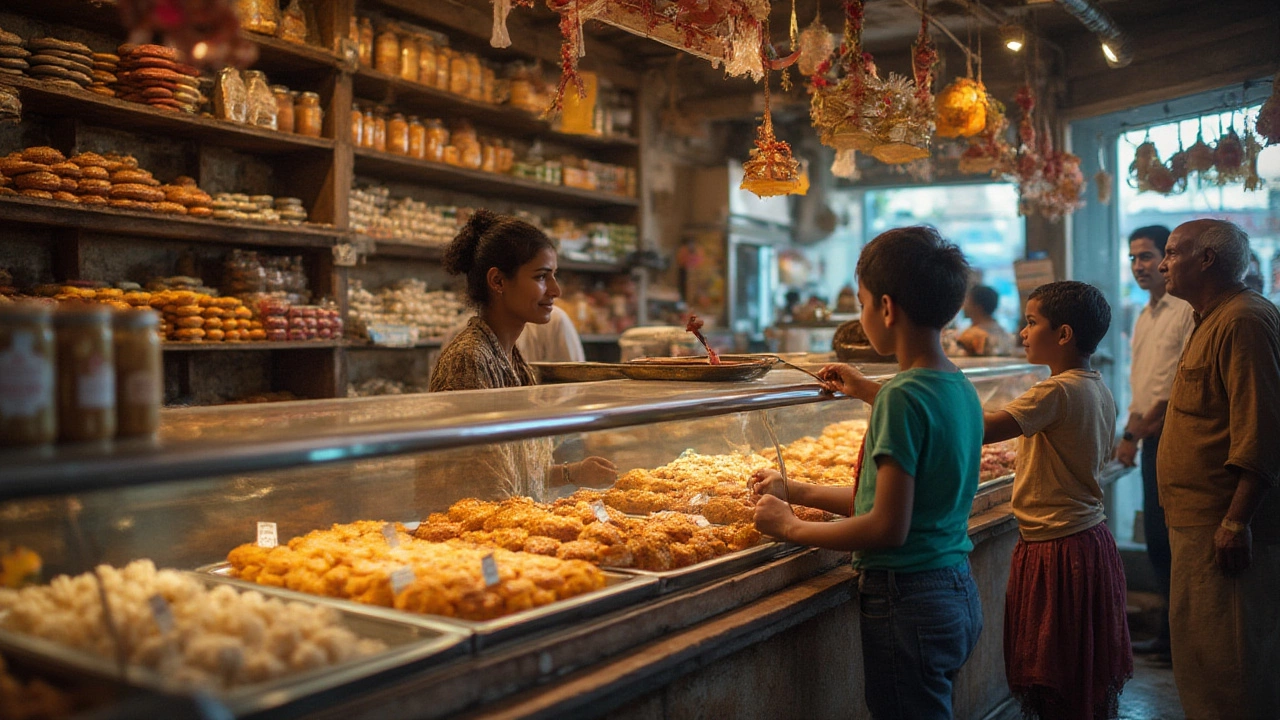
Market Magic: Where to Shop and How to Navigate Surat’s Bazaars
If you like your shopping with a side of chaos, you’re in the right place. Surat’s bazaars aren’t polished malls—they’re vibrant, packed, and sometimes a little wild. But they’re where you’ll find the best deals, the biggest surprises, and often, the best stories to bring home.
The heartbeat of Surat’s shopping world is Ring Road. The entire stretch is crammed with wholesale textile markets overflowing with saris, dress materials, and suit pieces. Millennium Market and New Textile Market are must-visits, especially if you’re interested in fabric. For home textiles like bed sheets, cushion covers, and curtains, the APMC Market and Bombay Market stand out for quality at jaw-dropping prices.
Chowk Bazaar in the Old City gives you the old-world charm—stone pavilions, narrow lanes, vendors calling out their wares. You’ll find everything from daily-use items to quirky antique pieces. Gopi Talav is good for exploring books, stationery, handicrafts, and household products. If you’re after branded fashion or imported goods, check out VR Surat Mall or RahulRaj Mall; but for real Surat flavor, stick to the bazaars.
- Early mornings are bustling, but less crowded—good for a focused trip.
- Evenings have more local flavor, but expect traffic. It gets hectic after 6 pm.
- Bring your own reusable bags. Plastic is banned in many areas, and shops rarely offer bags for free.
- If you’re buying in bulk, ask for wholesale rates. Even tourists can get them, not just big traders.
- Keep your valuables close and go with cash in hand for the smallest stalls. UPI and mobile payments work for anything over 100 INR at most cloth shops.
- If you’re shopping for gifting, vendors can vacuum-pack textiles for travel—just ask!
Here’s a quick breakdown of Surat’s main marketplaces:
| Market Name | Main Products | Best Visit Time |
|---|---|---|
| Ring Road | Textiles | 10 AM - 2 PM |
| Chowk Bazaar | Snacks, sweets, antiques | 4 PM - 8 PM |
| Bombay Market | Bedsheets, curtains | 11 AM - 5 PM |
| Millennium Market | Fashion fabrics | 10 AM - 3 PM |
The vibe can feel hectic, especially if you’re new. But most shopkeepers are friendly, and a little Gujarati phrase or two (“Kem cho?” for “How are you?”) wins big smiles. And if a shop offers you tea, accept—it usually means you’re about to get a killer deal or learn something fascinating about Surat’s textile secrets.
Unique Finds: Beyond Textiles and Food—Special Souvenirs and Unusual Products
Okay, so you’ve stuffed your bags with saris, gorged on ghari, and snapped up enough locho to feed a cricket team. What else is worth grabbing in Surat? Glad you asked, because there’s a world beyond textiles and treats here—you just have to know where to look.
For starters, Surat is quietly famous for handcrafted wooden items and homeware. Seek out beautifully carved photo frames, decorative boxes, or unique wall panels made by local artisans. Surat’s kite-making traditions are legendary, especially every January during Uttarayan (kite-flying festival). Snag a few colorful, handpainted kites—they’re cheap, easy to pack, and totally unique souvenirs. If you're lucky enough to visit close to the festival, you’ll see whole streets lined with kite stalls, the air buzzing with excitement and fierce competition over string quality and design.
Another overlooked specialty? Perfumed incense sticks and attar (traditional perfume oils). Surat produces these in large quantities for export, but the best-smelling and highest quality batches usually stay in the local markets. Zampa Bazaar and Chowk area are great for browsing varieties—the locals swear by frankincense, rose, and sandalwood blends.
Are you into home styling? Surat’s mosaic tiles and jali work (intricate latticed screens) are as stunning as they are affordable, shipped out by the truckload around India. If you want to take home smaller stuff, watch for playful cushion covers with colorful threadwork or mirror embroidery—easy gifts that make any living room stand out. Many of these products are done by self-help groups or home-based artisans, so you’re supporting local families, not just big factories, when you buy them.
Tip: If you see anything made from “Bandhani” fabric (the Gujarati tie-dye technique), don’t think twice—grab it. These patterns—tiny dots, vivid colors—are pure Surat and sell out fast. Handmade Bandhani dupattas or scarves work for all ages. And for something really quirky? Some stalls sell little statues of ‘Surat No Dodo’—the city’s famous river turtles. They’re seen as lucky charms by locals, and they’re adorable to boot.
Even tech lovers find surprises in Surat. The electronics parts markets, especially near Sardar Patel Market, are cluttered with gadgets, accessories, and sometimes rare finds. Not exactly touristy, but worth checking out if you’re a hobbyist or need a hard-to-find tool.
Here are some unique Surati gifts and souvenirs you won’t find at airports:
- Handmade wooden combs (gentle on hair, last forever)
- Brass diyas (oil lamps) for festive decor
- Mirror-work fashion accessories (think bags or jewelry)
- Traditional brass kitchenware
- Local artwork—look for miniature paintings or madhubani work at art fairs
And remember, buying local isn’t just about getting unique pieces. You’re connecting with Surat’s vibrant, ever-evolving story. Whether you stay a day or a week, Surat’s markets guarantee you’ll bring a little bit of the city’s sparkle home—with some snacks and stories mixed in for good measure.
